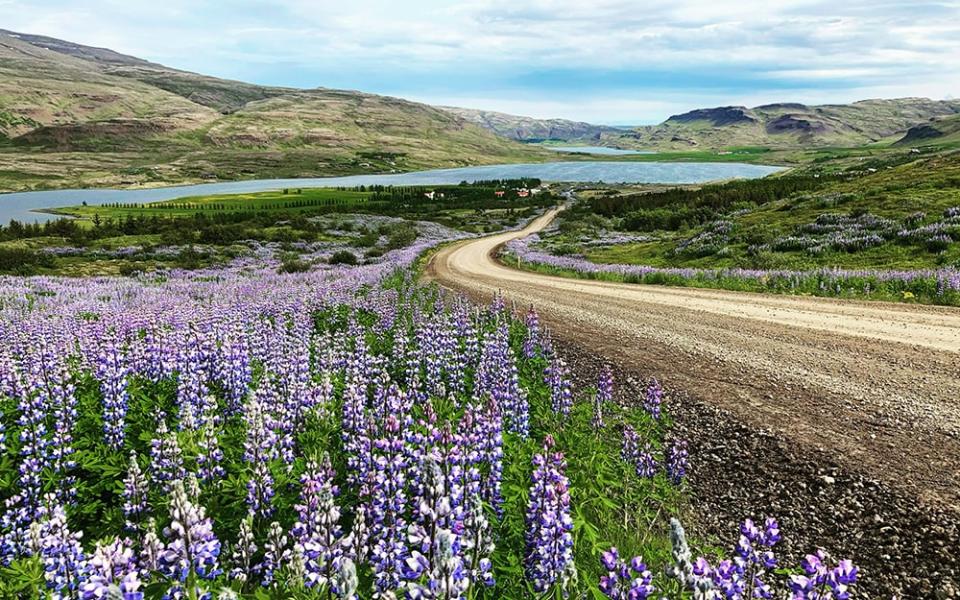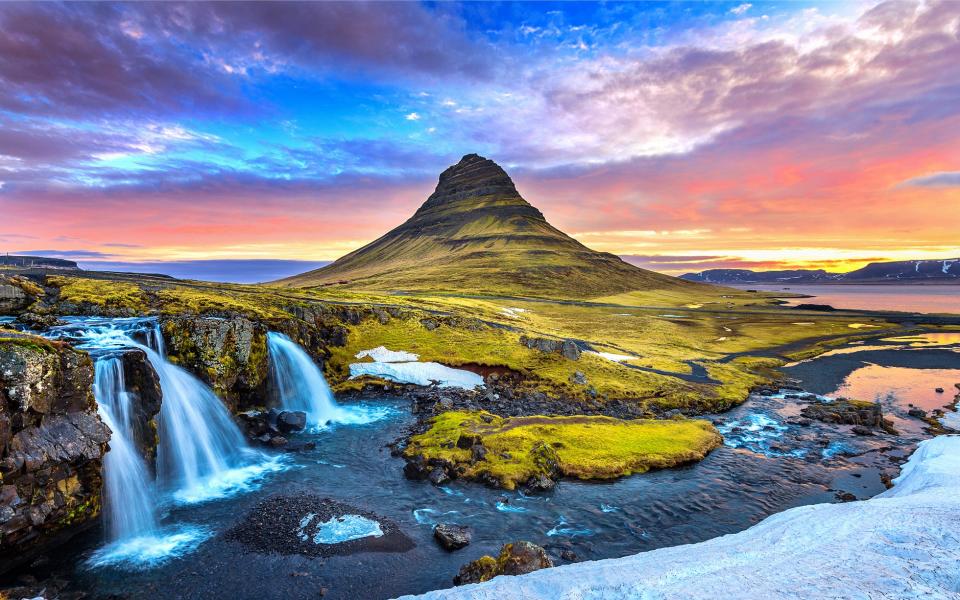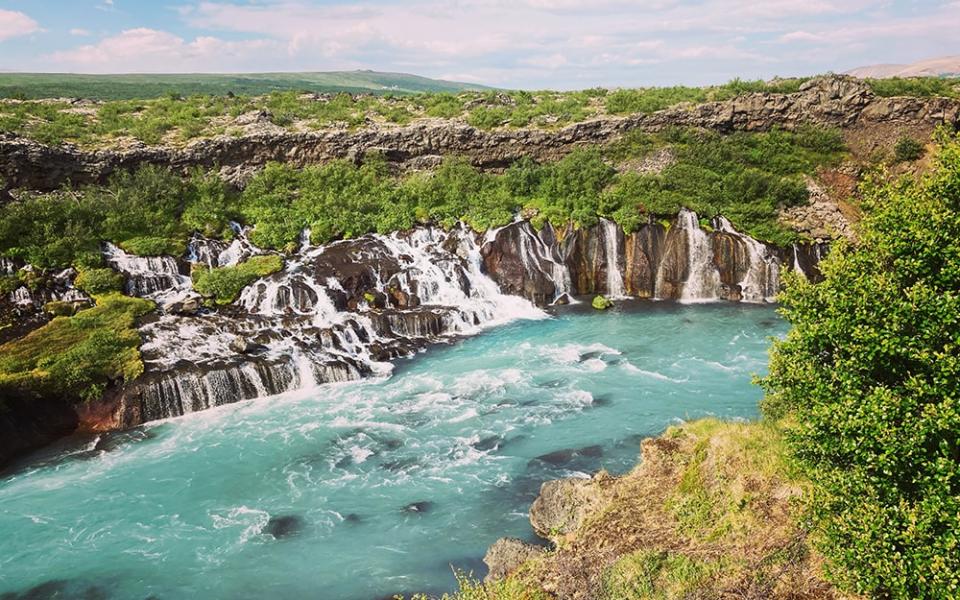Inside Europe's Covid-free land of adventure

Iceland, where even the nightclubs are open, is a fine option for those in search of a proper escape this summer
It’s just a few hours since I was given the all-clear from a not-too-comfortable but blissfully quick Covid-test at Iceland’s Keflavik Airport, and I’m neck-deep in the milky-blue, geothermally heated waters of the famous Blue Lagoon. In normal times, the lagoon pulls in around a million visitors a year, but today just a couple of hundred people are wading around with the venue’s trademark white silica smeared on their faces. And almost all the voices I hear are Icelandic.
"When we travelled around Iceland three summers ago to show our youngest daughter some of the sights along the southern coast, it was a nightmare," says a lady I start chatting to at the lagoon’s juice bar. "There were so many tourists, lots of elbowing... and we just gave up. It’s not that we don’t like or want visitors, but there really have been a lot during the last few years, and it’s honestly just nice to have our country back for a little while."
Her comments are echoed by many during my week-long drive through the country, as locals take the opportunity to explore their own country before the hordes descend again. And who can blame them? Tourism has escalated more rapidly here than almost anywhere else in the world, exploding from just 100,000 or so per year in 1986 (the year The Sugarcubes were founded) to well over two million in 2019. Despite the obvious economic benefits, this influx has inevitably led to concerns from a country of just 350,000 residents.
But now, just a few weeks after the country opened up to EU visitors (15 June), the capital’s diminutive streets are conspicuously devoid of the usual tourist armies, there’s an almost eerie dearth of tourist buses and rental cars on the roads, and the country has been given a stark reminder – for better and for worse – of a life without tourism. The debate has shifted away from the problems of overtourism to the best ways to build tourism up from scratch again.
As I head into the country’s scenic western region and interact with those directly involved with the tourism business, a more nuanced range of perspectives emerge. After a wonderful hike to the dramatic Glymur Falls in Hvalfjörður – where I witness an Icelandic family casually crossing a fast-flowing river via a slippery log and makeshift hand-wire with infants strapped to their backs and a husky dog cradled in their arms – I stay at the charming Hotel Glymur, a b&b decorated with local artworks and homely Icelandic knick-knacks. Owner Margrét Rósa Einarsdóttir greets me warmly on arrival, informing me that she almost lost her brother to the virus. "The last few weeks have been challenging," she says. "We had to close the hotel in mid-March, but with the help of the government we fortunately haven’t had to dismiss anyone. And we have been lucky enough to have a lot of Icelanders here."

Indeed, all the other guests at dinner are Icelandic; I receive some curious stares. The waitress makes a point of telling me that it’s "so good to have the tourists back," and in the hot tubs after dinner, a young couple from Reykjavik tell me that although they’re enjoying the peace and quiet, they’re also happy to see tourists returning – "not just for financial reasons," adds the man. "We are also just missing having international people around."
Such concerns admittedly seem to evaporate the deeper into the remote countryside I drive. Here, gulls, terns, oyster catchers and golden plovers – the latter is well-loved for traditionally heralding the onset of spring – swoop through clear blue skies unmarked by plane trails. Purple Alaskan lupen provide a colourful contrast to the moss-speckled lava fields. Mountains and volcanoes, threaded with rivers and waterfalls, rise up majestically, dwarfing the tiny farms that lie at their feet. The sheer raw beauty has an almost unreal feeling at times.
Unlike the farms in the south, many of which have been converted into holiday homes, many of those in the west are still active, albeit partly subsidised by the government and alternative revenue streams. During Covid, I’m told, some entrepreneurial types have returned to these farms to work on new products; craft beer, barley snacks, hot sauces made from greenhouse-grown chillies. But more conventional are the sidelines such as tourist accommodation and restaurants.
At Hvalfjörður (whale fjörd), I stop for lunch at Bjarteyarsandur, a sheep farm that’s been in the same family since 1887. Today it’s run by Arnheiður Hjörleifsdóttir and Guðmundur Sigurjónsso, and boasts an educational centre, campsite and holiday cottages, as well as a rustic restaurant that serves up Icelandic flatbread topped with locally caught trout, and farm-reared lamb. Farther north lies Erpsstadir, a working dairy farm that produces cheese, ice cream and Skyr (Icelandic yoghurt), which can be bought by visitors at the farm’s shop, along with home made jams and udder-shaped Skyr treats designed by students at the Art Academy of Iceland.

"We usually have some international people helping us out here in summer, but we were not able to this year," says owner Helga Guðmundsdóttir, bouncing her smiling one-year-old granddaughter, Erna, in one arm. "We have had to work very long hours to keep things going. Even so we would still like the government to be careful with tourism and not to rush it or take any risks."
At the Vidgelmer Cave, an impressive lava tunnel at Borgarfjördur, I learn that as well as decent governmental support (up to 75 per cent of their wages) to survive, Icelanders have all also received travel vouchers worth 5000 ISK (€32.36), which can be used at restaurants, pools, campsites, museums and hotels. I’m the only non-Icelander on the tour, and as we descend into the cold darkness of the tunnel, our guide tells me that Icelanders usually make up just two percent of visitors. "We got so used to doing the tours in English that we’ve found ourselves forgetting certain Icelandic words," he laughs.
As well as excellent hikes, glaciers and lava tunnels, the region is well known for its hot springs. In contrast to the slickly designed Krauma at Deildartunguhver, which can hold up to 120 people a time and has an excellent regionally-inspired restaurant, the contrastingly natural Husafell Canyon Baths – created just last year by the excellent and cooperatively run Hotel Husafell nearby – consists of three stone pools set in a flowing glacial river and surrounded by mountain peaks. The only facilities are the tasteful birchwood changing rooms, and the pools can only be visited as part of a tour (maximum 16 people) to keep the attraction safe from overtourism.
Curiously, almost all of the attractions I visit, including the lava cave and canyon baths, are privately owned. This includes the War & Peace Museum, which is set inside a former village hall in Akranes and tells the fascinating story of the country’s occupation during the Second World War. It’s run by Guðjón Sigmundsson, who has used his background in theatre and cinema to create a film-set-like exhibition consisting of thousands of collected objects; SS uniforms, British and American products from the 40s, even parts of shot-down German surveillance warplanes. Like the farms, the museum operates a restaurant and event space to keep it afloat.

The Settlement Centre at Borganes, founded in 2008, is operated by lively playwright and director Kjartan Ragnarsson, father of acclaimed international artist Ragnar Kjartasson. It tells the story of the settlement of Iceland as well as the dramatic Egill’s Saga, and eschews dry facts and figures in favour of an imaginative story-telling format involving wood carvings by local artists. The vast majority of the museum’s visitors (including its restaurant) come from abroad, and the project has received no formal support as yet. "The government are aware of our project and might still give us support if we really get to the point of having to close," says Kjartan. "But what the future holds is difficult to predict. I think it will take at least two years to go back to normal and maybe it never will. It will probably be more expensive to travel which means fewer tourists, but that may not be a bad thing. We are now experiencing a more relaxed atmosphere and are hopeful that we will survive."
Kjartan has been busy applying his innovative approach to a new museum in the small western town of Búðardalur, the alleged birthplace of Erik The Red. Set on the first floor of a converted fishing house, it uses the same mix of winsome wood carvings, paintings and interactive maps to detail Erik’s bloodthirsty saga along with the famous explorations of his son Leifur Eiriksson, who reached continental North America half a millennia before Columbus. Along with Eiríksstaðir, a beautifully reconstructed turf house located in Haukadalur that demonstrates the Viking lifestyles of 10th century Iceland, visitors to the area are given a decent grounding in the sagas but also reminded of how the residents of this far-flung North Atlantic rock have long endured plagues, volcanic eruptions and brutal weather conditions.
It’s not like recent times have been devoid of drama either, what with the devastating economic crash of 2008, the Eyjafjallajokull explosion in 2010, and the sudden bankruptcy of WOW Airlines in 2019. From this perspective, the pandemic is surely just another hurdle to overcome. "Icelanders are known for their resilience, so I am sure we will find new opportunities," reflects Kjartan. "Through the centuries we have had to respond to many unforeseen circumstances, and it is comforting to know that in a crisis we always stand together."
Essentials
Paul travelled courtesy of Inspired by Iceland and was guided by Icelandic Exclusive Travels.


